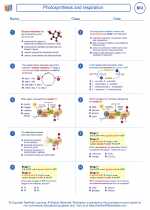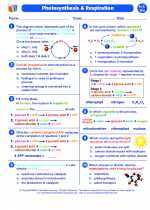Medical Imaging
Medical imaging is a technique used to create visual representations of the interior of a body for clinical analysis and medical intervention. It plays a crucial role in the diagnosis and treatment of various medical conditions. There are different types of medical imaging techniques, each with its own principles and applications.
Types of Medical Imaging
1. X-ray Imaging: X-rays are a form of electromagnetic radiation that can pass through the body to create images of the internal structures, such as bones and organs. X-ray imaging is commonly used for diagnosing fractures, infections, and tumors.
2. Ultrasound Imaging: Ultrasound uses high-frequency sound waves to produce images of the internal organs and tissues. It is often used to examine the abdomen, pelvis, and blood vessels, as well as monitor the development of a fetus during pregnancy.
3. Computed Tomography (CT) Scan: CT scans use a combination of X-rays and computer technology to create detailed cross-sectional images of the body. It is particularly useful for detecting tumors, internal injuries, and abnormalities in the brain and other organs.
4. Magnetic Resonance Imaging (MRI): MRI uses a strong magnetic field and radio waves to generate detailed images of the body's organs and tissues. It is valuable for diagnosing conditions affecting the brain, spinal cord, and musculoskeletal system.
5. Positron Emission Tomography (PET) Scan: PET scans involve the use of a radioactive substance to create 3D images of the body's functional processes, such as metabolism and blood flow. It is used to detect cancer, heart conditions, and neurological disorders.
Study Guide
When studying medical imaging, it is important to understand the principles, applications, and limitations of each imaging technique. Here are some key points to focus on:
- Explain the basic principles behind X-ray, ultrasound, CT scan, MRI, and PET scan.
- Compare and contrast the advantages and limitations of each imaging technique.
- Describe the specific medical conditions or scenarios where each imaging technique is commonly employed.
- Understand the safety considerations and potential risks associated with certain imaging modalities, such as exposure to radiation in X-ray and CT scans.
- Explore the advancements and future trends in medical imaging technology, such as the development of more precise imaging modalities and the integration of artificial intelligence for image analysis.
By mastering the fundamentals of medical imaging, students can appreciate the significance of these techniques in modern healthcare and develop a solid foundation for further studies in medical diagnostics and imaging technology.
.◂Biology Worksheets and Study Guides High School. Photosynthesis and respiration

 Worksheet/Answer key
Worksheet/Answer key
 Worksheet/Answer key
Worksheet/Answer key
 Worksheet/Answer key
Worksheet/Answer key
 Vocabulary/Answer key
Vocabulary/Answer key
 Vocabulary/Answer key
Vocabulary/Answer key
